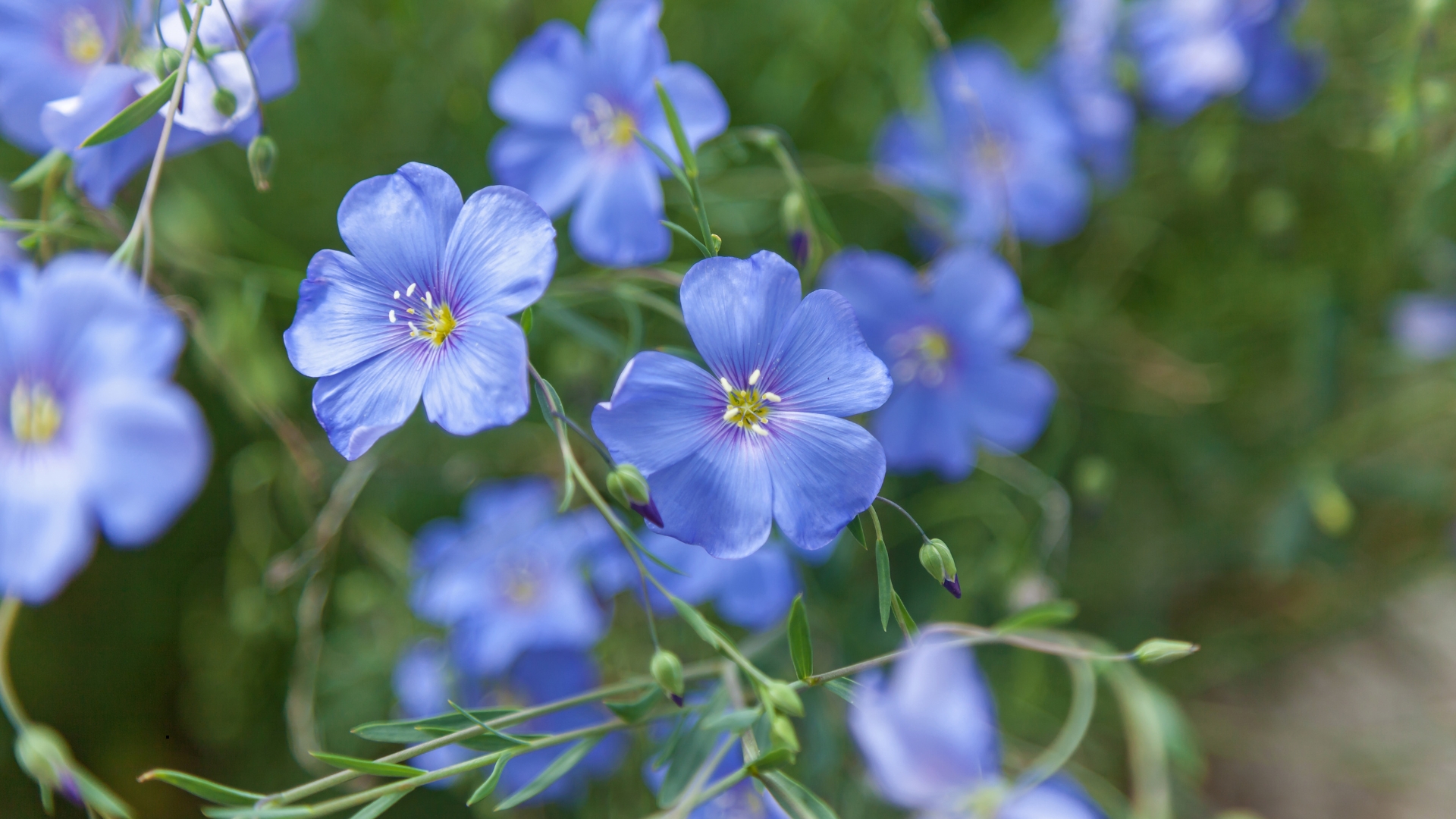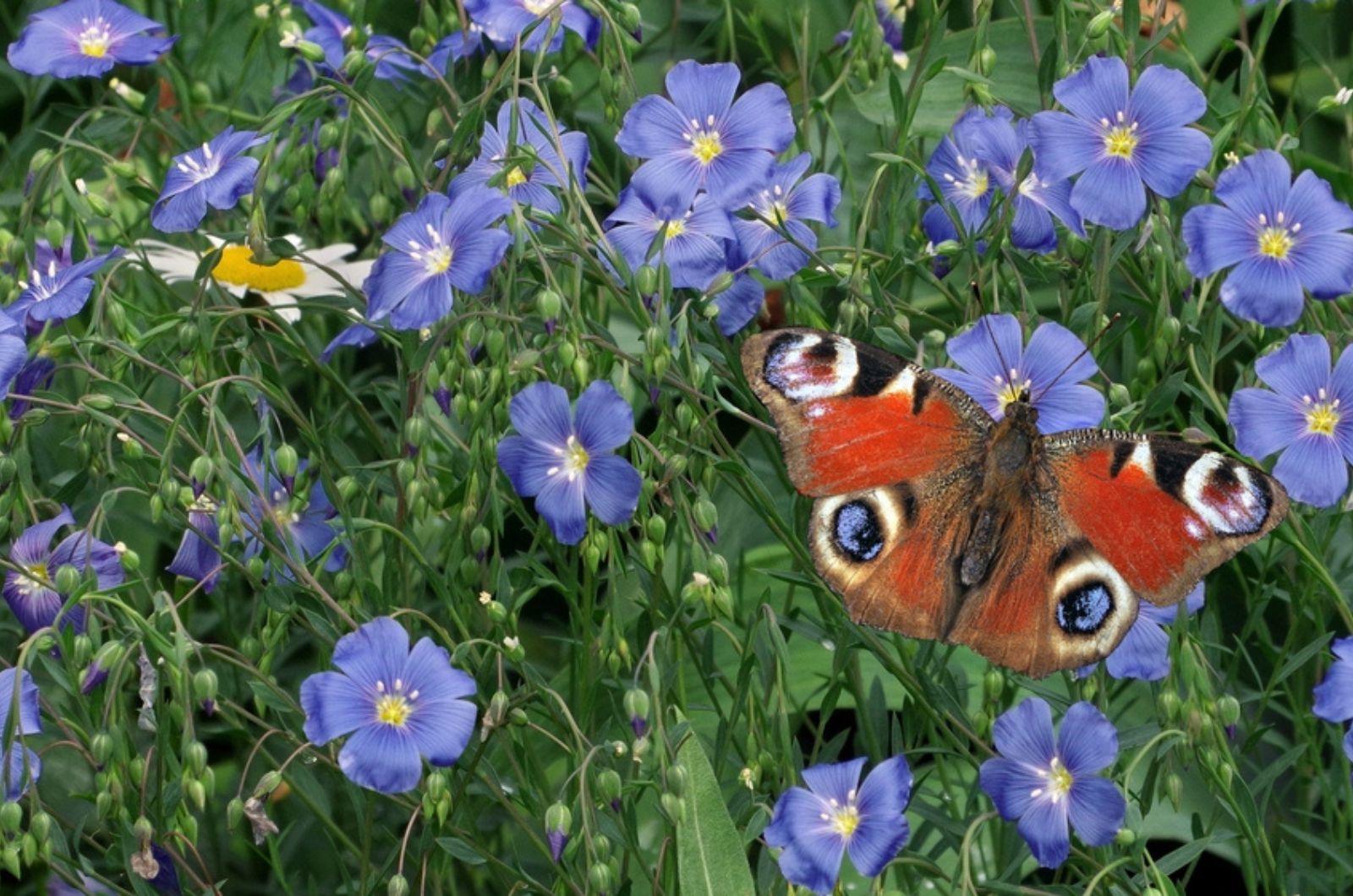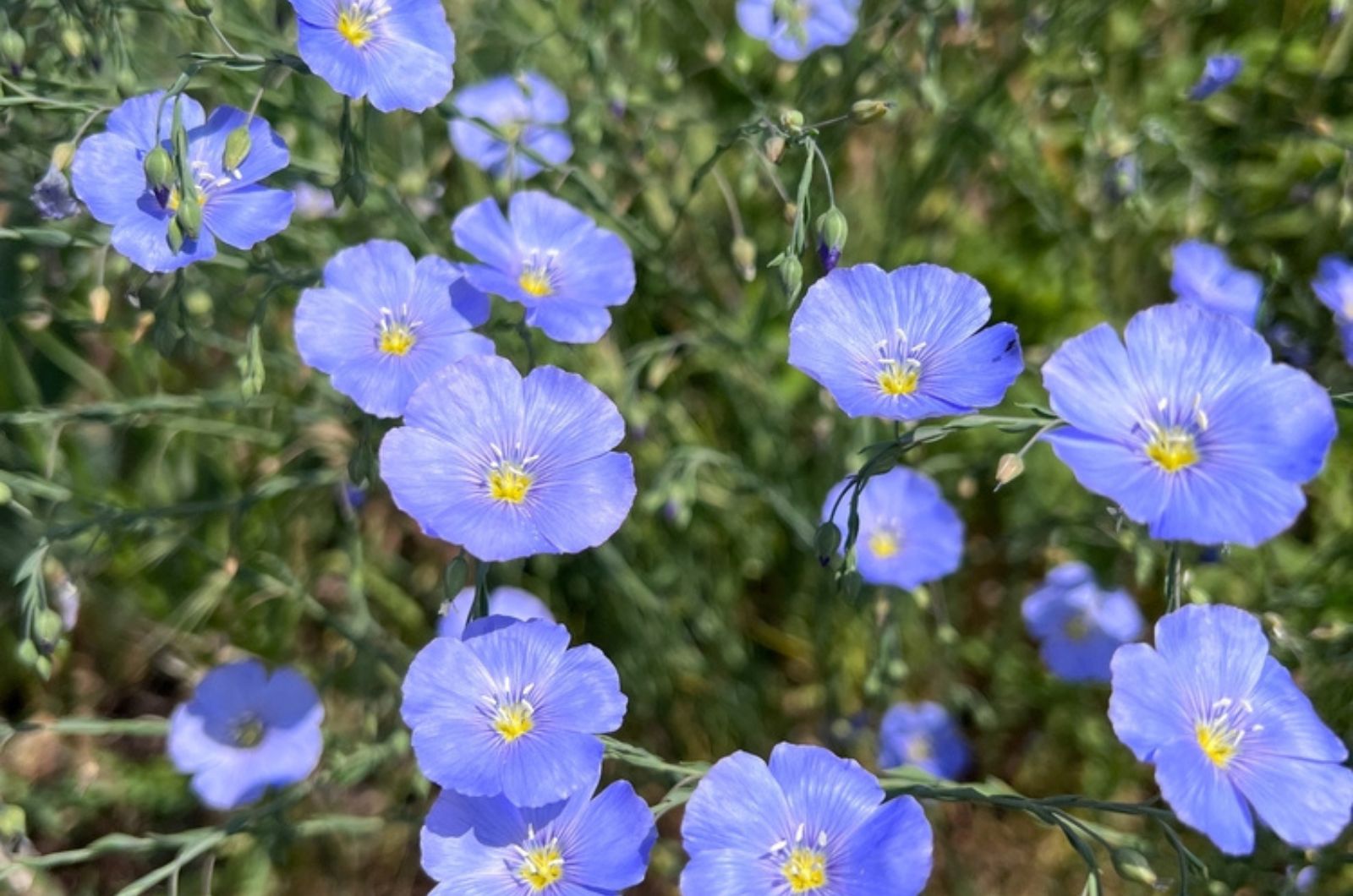A few years ago, I visited my friend in Oregon and she was delighted to show me the local flora. I saw a lot of new plants that aren’t common in my Florida garden.
The one I especially liked had a delicate appearance with enchanting bluish-purple blossoms. She told me it was Blue flax, a plant whose flowers last for a day only.
The next thing I knew, I was looking for the seeds online. Needless to say, Blue flax has been a staple in my flower beds ever since.
Yes, its odd flower life cycle was the reason why I added it to my garden in the first place. However, I was blown away when I discovered the treasure trove of benefits this plant has up its sleeve.
So, let’s kick off our Blue flax journey by unveiling its hidden gems!
Why Blue Flax Is A Must In A Summer Garden
If you want to add a special touch of beauty to your garden, Blue flax will do a perfect job. But its flowers last for a day only, some may claim. That’s true, the flowers wither by night but you get rewarded with a new set of blossoms the next day. How remarkable!
And this unique flowering cycle lasts from April through September, which is way longer than other common plants.
Blue flowers will fit perfectly into every garden design, but my favorite is a cottage garden.
Butterflies, bees, and other beneficial creatures adore Blue flax, so it can be a new member of your pollinator patch.
If you have a smaller garden, don’t worry, Blue flax doesn’t take up a lot of space and won’t exceed 30 inches.
This plant self-seeds, meaning that it will come back on its own, without you putting an effort into planting.
If your garden is often bothered by deer, don’t worry, these animals aren’t really fond of Blue flax.
Last but not least, this is our native plant, so growing it is a piece of cake.
And This Is What I Do To Keep It Happy And Healthy
I assume you already know that native plants are well-adapted to our conditions. And that’s exactly the case with Blue flax.
It’s a drought-resistant plant, making it perfect for rocky gardens. You’ll need to water it more often until it’s well-established.
I planted a few seeds in a partially shaded area in my garden and some in full sun. From my experience, Blue flax grown in direct sunlight grows healthier and produces more blossoms.
The soil must be free-draining because Blue flax doesn’t like its roots getting wet. Remember, it’s drought-resistant!
I’ve never fertilized it and it grows perfectly. I amended the soil with compost before planting, and that was pretty much it. It’s really one of the easiest plants to grow!
If you don’t want your Blue flax to spread through self-seeding, simply cut it back to the ground once the flowering season ends.
I never cut it back at this time because birds adore munching on its seeds throughout the winter. As soon as spring arrives, I prune it back and it regrows in no time!
Blue Flax is hands down one of the best picks for a summer garden. With our top-notch tips, you’ll have it flourishing and flaunting its lovely blooms next season!



